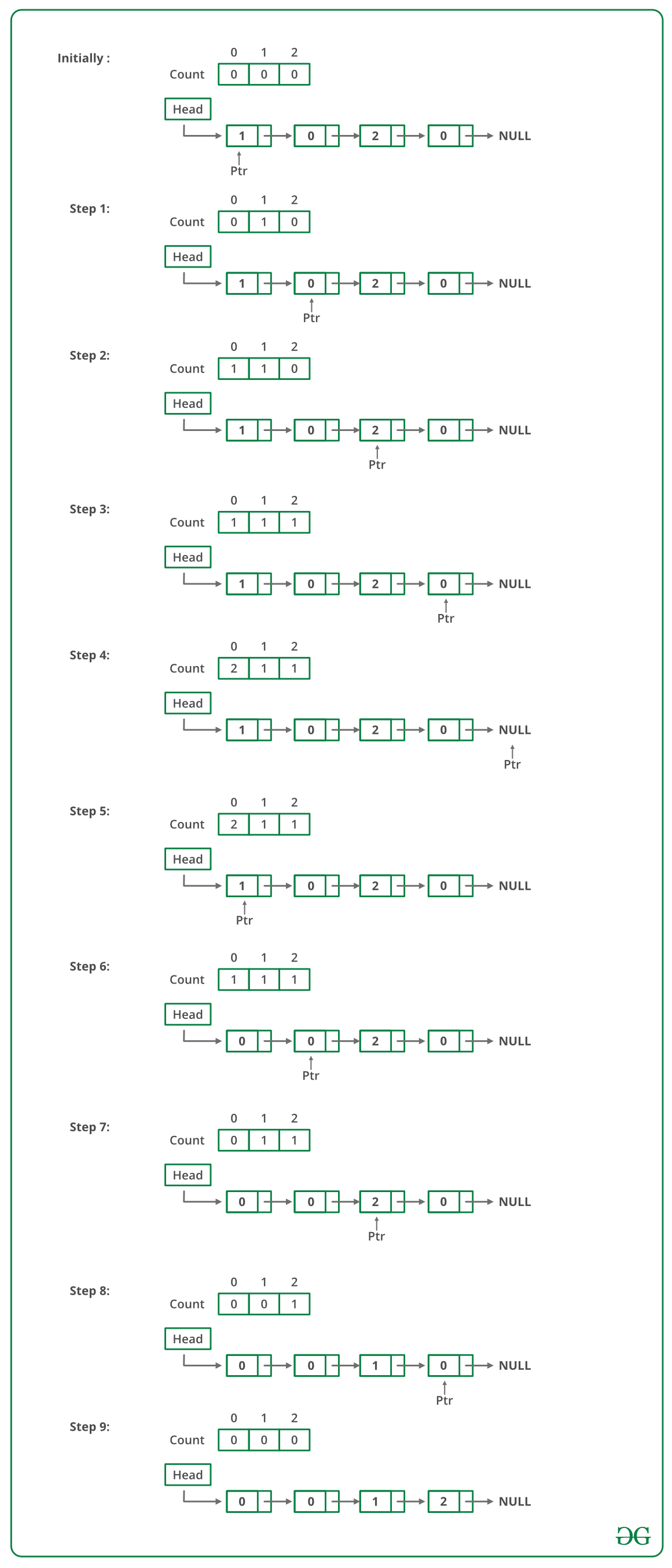Python Program For Sorting A Linked List Of 0s, 1s And 2s
Last Updated :
18 May, 2022
Given a linked list of 0s, 1s and 2s, sort it.
Examples:
Input: 1 -> 1 -> 2 -> 0 -> 2 -> 0 -> 1 -> NULL
Output: 0 -> 0 -> 1 -> 1 -> 1 -> 2 -> 2 -> NULL
Input: 1 -> 1 -> 2 -> 1 -> 0 -> NULL
Output: 0 -> 1 -> 1 -> 1 -> 2 -> NULL
Source: Microsoft Interview | Set 1
Following steps can be used to sort the given linked list.
- Traverse the list and count the number of 0s, 1s, and 2s. Let the counts be n1, n2, and n3 respectively.
- Traverse the list again, fill the first n1 nodes with 0, then n2 nodes with 1, and finally n3 nodes with 2.
Below image is a dry run of the above approach:

Below is the implementation of the above approach:
Python
class LinkedList(object):
def __init__(self):
self.head = None
class Node(object):
def __init__(self, d):
self.data = d
self.next = None
def sortList(self):
count = [0, 0, 0]
ptr = self.head
while ptr != None:
count[ptr.data] += 1
ptr = ptr.next
i = 0
ptr = self.head
while ptr != None:
if count[i] == 0:
i+=1
else:
ptr.data = i
count[i] -= 1
ptr = ptr.next
def push(self, new_data):
new_node = self.Node(new_data)
new_node.next = self.head
self.head = new_node
def printList(self):
temp = self.head
while temp != None:
print str(temp.data),
temp = temp.next
print ''
llist = LinkedList()
llist.push(0)
llist.push(1)
llist.push(0)
llist.push(2)
llist.push(1)
llist.push(1)
llist.push(2)
llist.push(1)
llist.push(2)
print "Linked List before sorting"
llist.printList()
llist.sortList()
print "Linked List after sorting"
llist.printList()
|
Output:
Linked List Before Sorting
2 1 2 1 1 2 0 1 0
Linked List After Sorting
0 0 1 1 1 1 2 2 2
Time Complexity: O(n) where n is the number of nodes in the linked list.
Auxiliary Space: O(1)
Please refer complete article on Sort a linked list of 0s, 1s and 2s for more details!
Like Article
Suggest improvement
Share your thoughts in the comments
Please Login to comment...